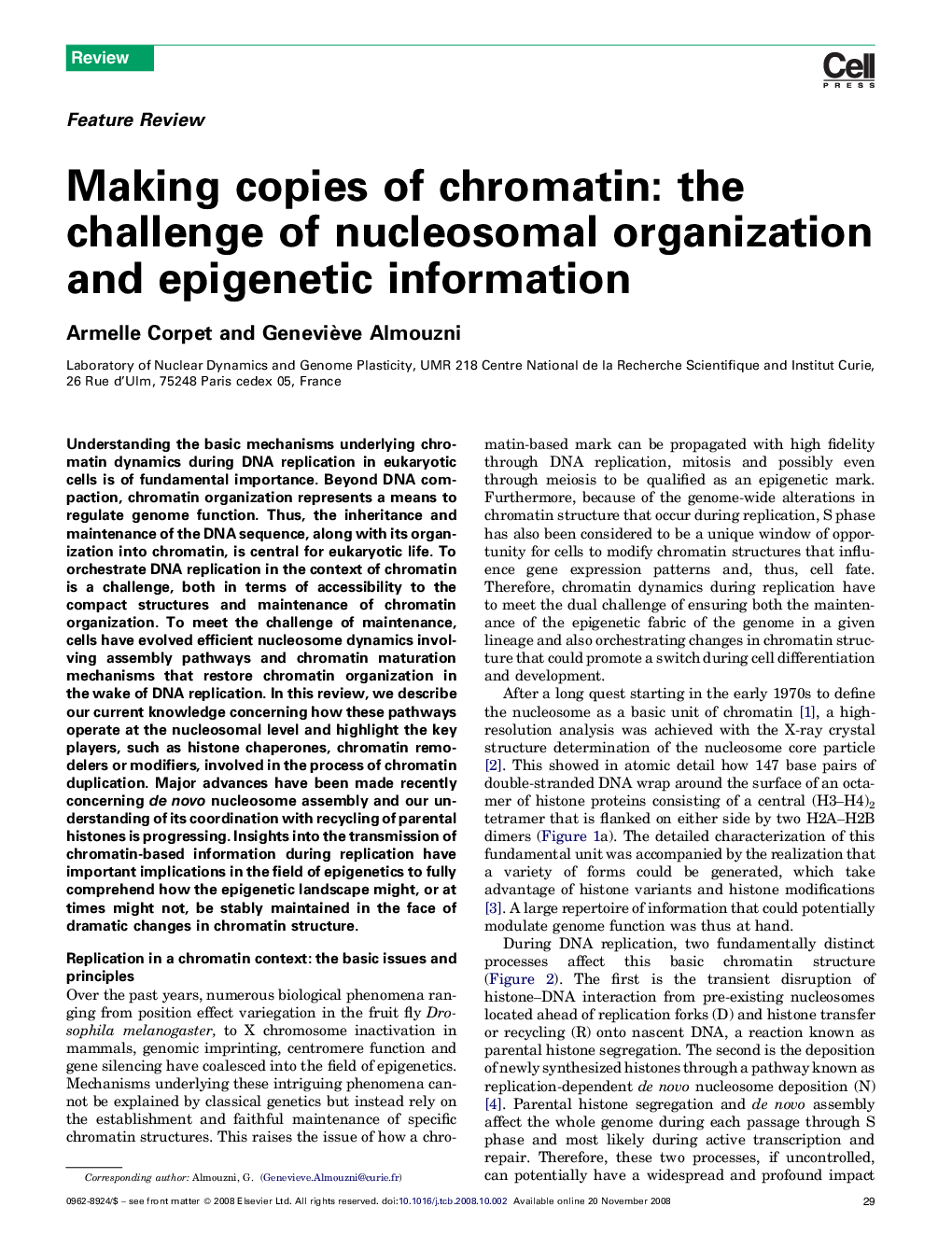| Article ID | Journal | Published Year | Pages | File Type |
|---|---|---|---|---|
| 2205042 | Trends in Cell Biology | 2009 | 13 Pages |
Understanding the basic mechanisms underlying chromatin dynamics during DNA replication in eukaryotic cells is of fundamental importance. Beyond DNA compaction, chromatin organization represents a means to regulate genome function. Thus, the inheritance and maintenance of the DNA sequence, along with its organization into chromatin, is central for eukaryotic life. To orchestrate DNA replication in the context of chromatin is a challenge, both in terms of accessibility to the compact structures and maintenance of chromatin organization. To meet the challenge of maintenance, cells have evolved efficient nucleosome dynamics involving assembly pathways and chromatin maturation mechanisms that restore chromatin organization in the wake of DNA replication. In this review, we describe our current knowledge concerning how these pathways operate at the nucleosomal level and highlight the key players, such as histone chaperones, chromatin remodelers or modifiers, involved in the process of chromatin duplication. Major advances have been made recently concerning de novo nucleosome assembly and our understanding of its coordination with recycling of parental histones is progressing. Insights into the transmission of chromatin-based information during replication have important implications in the field of epigenetics to fully comprehend how the epigenetic landscape might, or at times might not, be stably maintained in the face of dramatic changes in chromatin structure.
